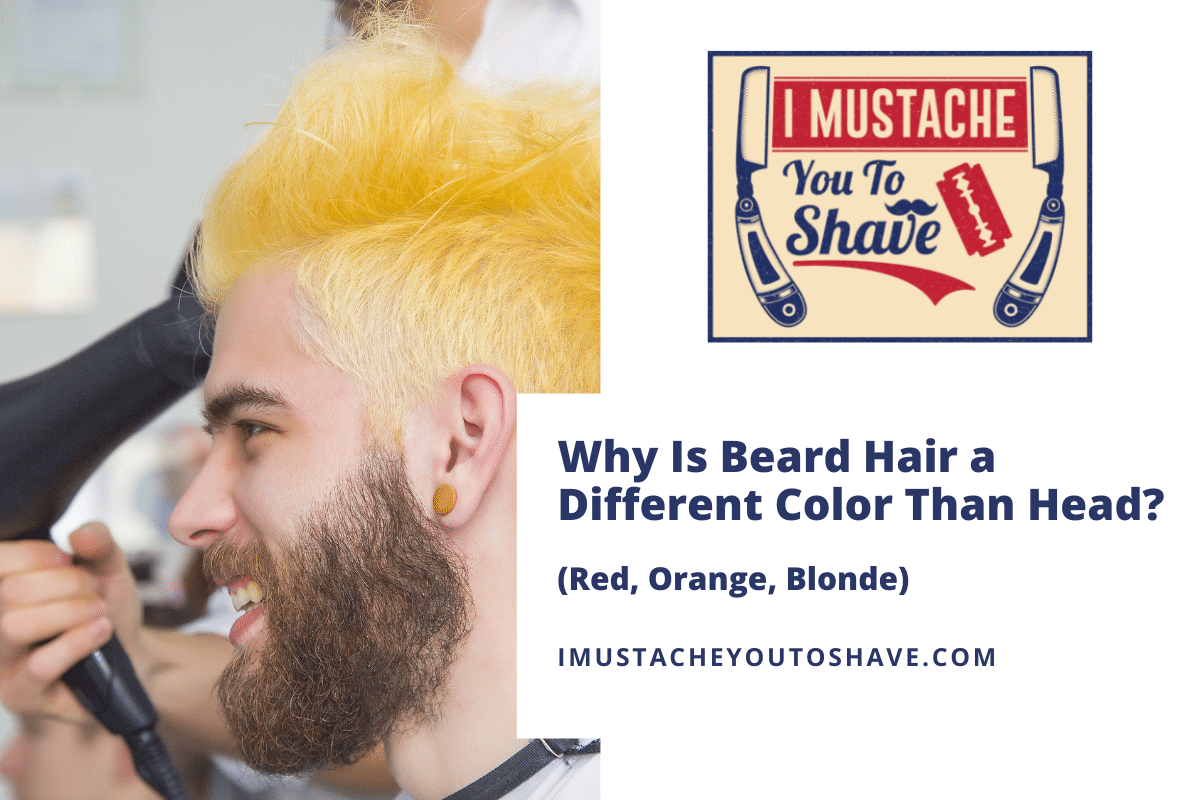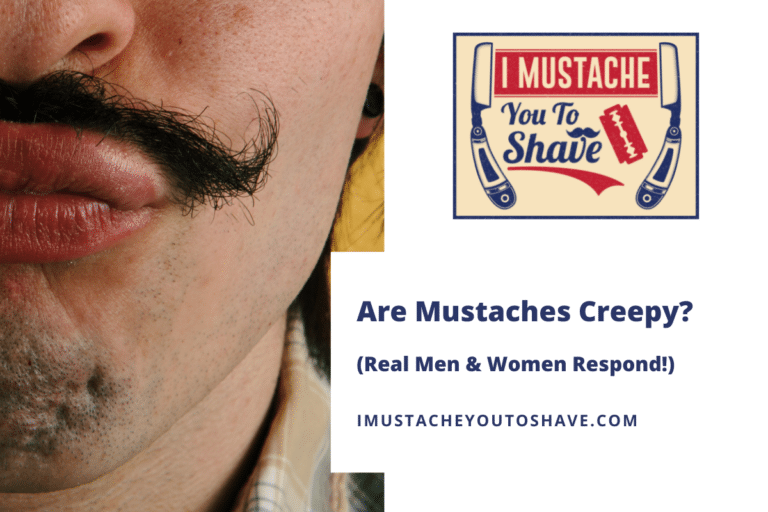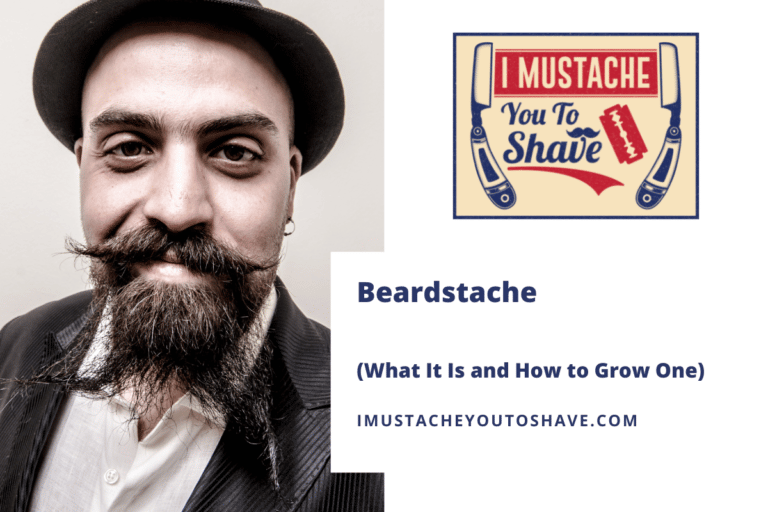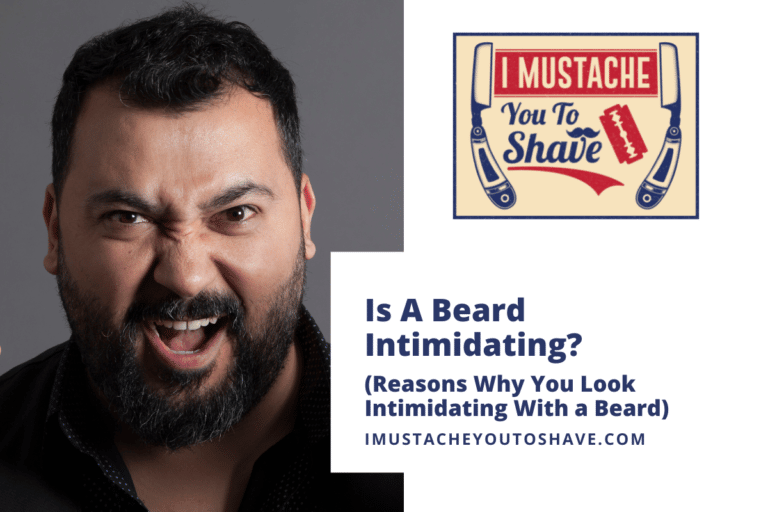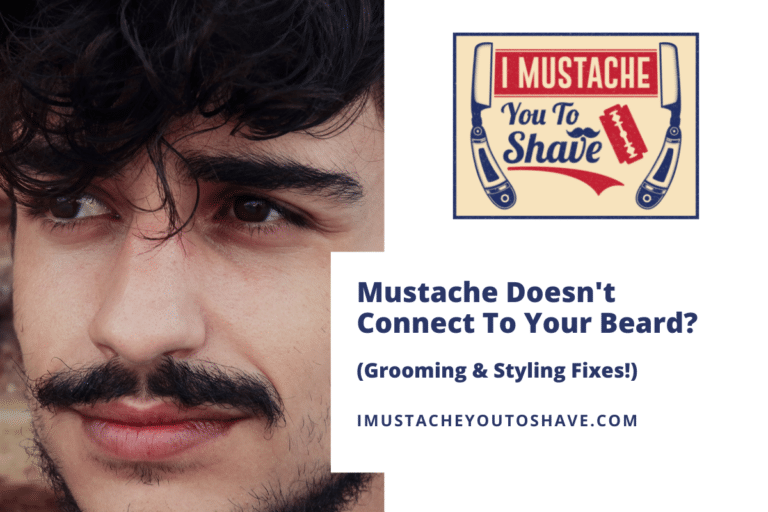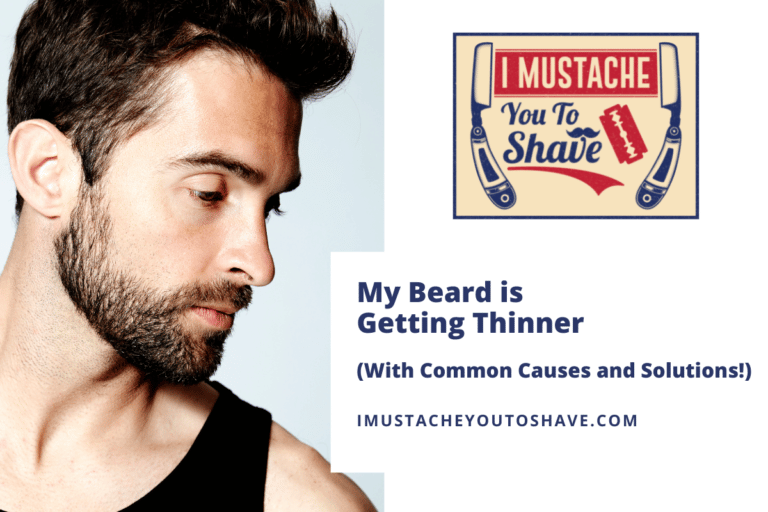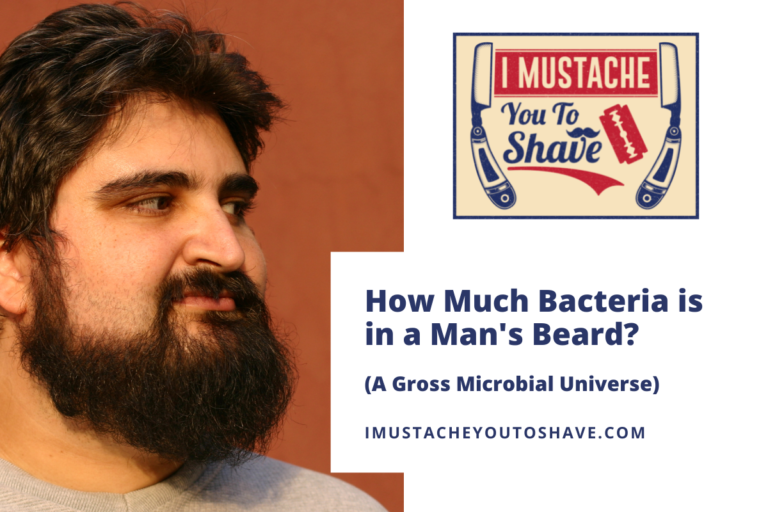Why Is My Beard or Mustache Turning Blonde or Orange?
These days, I am mostly concerned with the number of grey hairs in my beard but many men wonder why some parts of their beard are developing blonde, red, orange, or some other lighter color. So, why is your beard turning blonde?
Beard hair can turn blonde or lighten naturally when exposed to the sun, but a beard can also have blonde, orange, or red hair mixed in based on genetics, age, and even stress. Eumelanin is responsible for brown and black colors, while pheomelanin is responsible for red and blonde. Each hair follicle can produce a different mixture of each pigment.
Read on to learn more about the science behind beard color, what makes it change, and some practical advice for dealing with it!
How can beard hair be a different color than your head hair?
Have you ever seen a man with blonde hair and a dark beard or with dark hair and a red beard? It happens, and it’s perfectly normal. In fact, most men will see variations in hair color in different locations across the body.
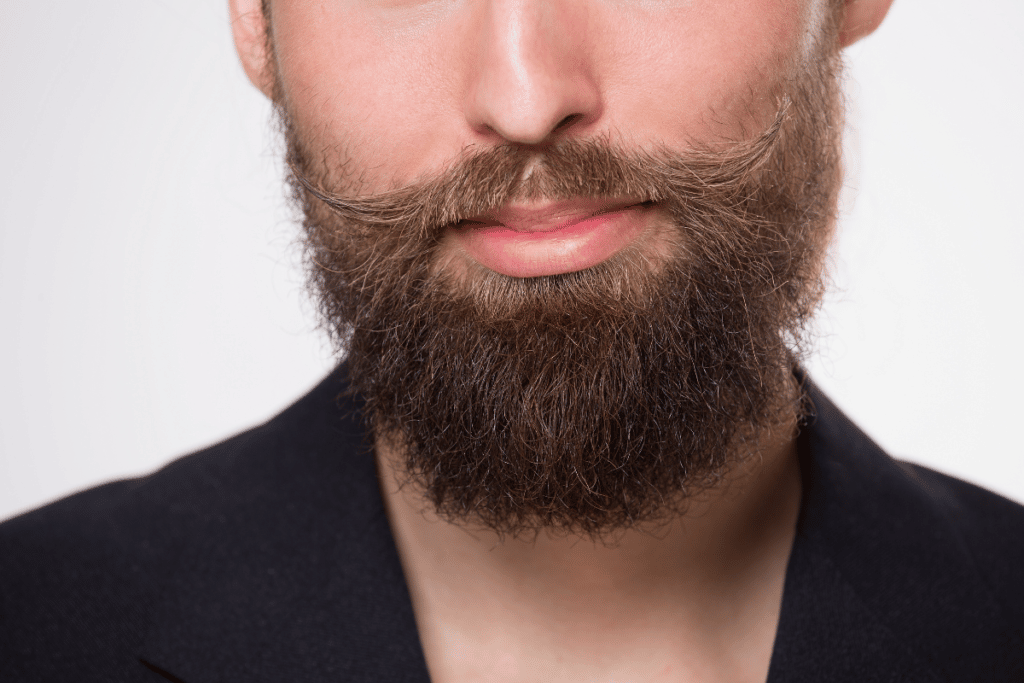
If your beard hair is a different color than your head hair, genetics and melanin levels play a role. Your genetic code and the prevalence of melanin pigments in the hair determine hair color. Different hair follicles produce different levels of pigments.
Melanin is a pigment present in skin and hair. The percentage of dark pigments and red/yellow pigments in each strand determines your hair color.
Black-haired men have large amounts of eumelanin, while brown-haired men have a moderate amount. Blondes have very little eumelanin present, while redheads have a large amount of pheomelanin.
Our genes play a big role in the exact levels of each type of melanin, but we’re still learning exactly how this mechanism works.
Fun Fact: The same pheomelanin pigment is responsible for our pink lip color.
Why is your beard three different colors?
One day you look in the mirror and see a rainbow of colors in your beard. Brown, black, blonde, and even red. Is this normal?
Yes, a multi-colored beard is very common.
Your beard can include three or more different colors because of each hair follicle’s combination of melanin pigments. Some follicles make more dark pigments. Other follicles make more red or yellow pigments. The result is different hair shades throughout the beard.
Melanocytes in the hair follicles produce pigments. Then these pigments color the hair. The same process can happen in your head hair. If you have some red or light highlights, melanin concentrations are responsible.
Fun Fact: Over 90% of the world’s population has brown or black hair.
Multicolored hair genetics
Have you ever wondered how two dark-headed parents can have a blond child? The answer is genetics. Our genetics determine all types of bodily features.
The genes we receive from each of our parents determine our hair color. Since gene research has not determined a single responsible gene, our hair color is considered polygenic. Many different genes are involved.
Some genes are dominant and some are recessive. The dominant genes usually win out over the recessive. However, sometimes the recessive gene disappears, and a strange hair color pops up in an otherwise uniform family. When it comes to hair color, the normal rules don’t apply.
Even though genetic research is ongoing, science has uncovered some interesting reasons for different hair colors.
Why is my beard turning red?
Many men are shocked when their beard grows red. How does this happen if the head hair is another color?
The Melanocortin 1 receptor gene (MC1R) is responsible for a red beard. This gene is inherited from both parents. If one gene is mutated, your beard will be red even if your hair isn’t.
This solo mutation can make interesting hair and beard combinations. Since there can also be darker pigments alongside the red pigments, even red beards can have many color variations.
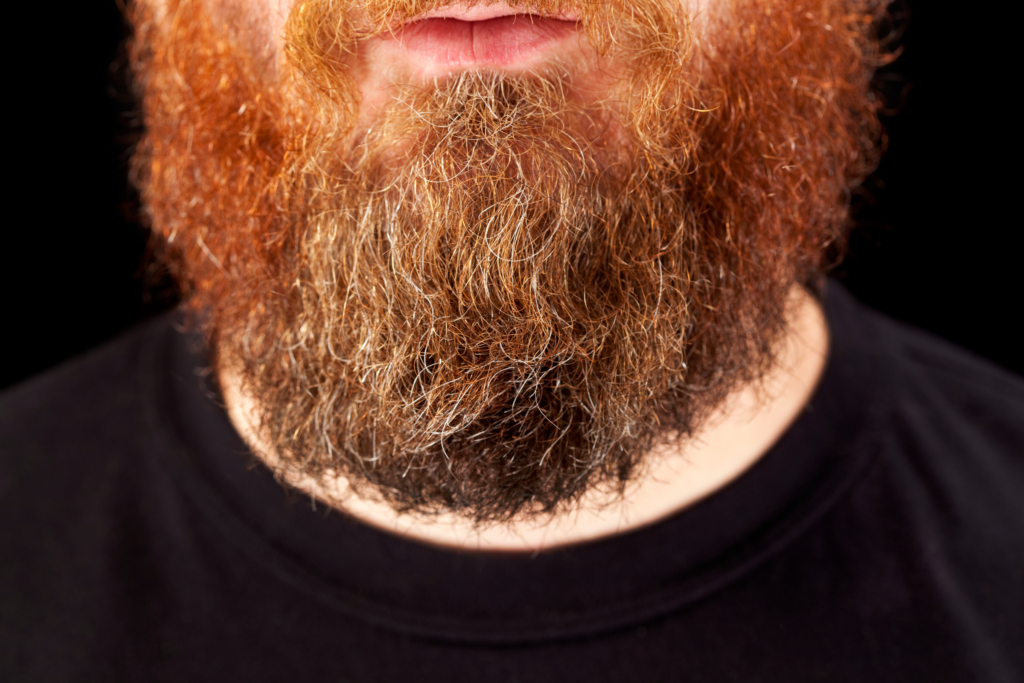
MC1R gene
Science has revealed that the Melanocortin 1 receptor genes are the drivers of red hair and red beards.
The two MC1R genes are located on chromosome 16. Unmutated, they produce a protein that converts the red/yellow pigments into darker pigments. If one of these genes mutates, a red beard appears.
If both MC1R genes mutate, then both the scalp and beard hair will be red.
What about red hair mixed in with darker hair?
Beard color combinations are almost as unique as fingerprints. Some beards might be solid red, while others have red highlights.
If you only have one mutated MC1R gene, red hairs can occur randomly and be mixed into darker beard hair.
Eumelanin and pheomelanin are both present when only one mutation happens. They continue to mix at different ratios and fight it out.
How rare is a red beard?
You are a rarity in the world’s population if you have both red hair and a red beard.
Only one to two percent of the world’s population has natural red hair. This is a result of a double gene mutation. A red beard without red hair would be more common since only one gene mutation is responsible.
The majority of redheads have Celtic ancestry. Studies show that twenty million people from the United Kingdom and Ireland possess the “ginger gene.”
Fun fact: Researchers believe Ireland and Scotland’s rainy, overcast weather caused genetic adaptations resulting in red hair. Redheads absorb vitamin D from the sun better than other hair colors.
Will red beard hairs turn darker?
If you find some red beard hairs, is there a chance they will turn darker?
It’s a possibility.
Red beard hairs can turn darker, especially if only one mutated MC1R gene is involved. This is due to the presence of eumelanin.
Brown pigments are more dominant and try to take over. Sometimes they are successful, resulting in darker strands.
Why is my beard turning orange?
Color is in the eye of the beholder. One man’s red might be another man’s orange. Facial hair color can come in a multitude of shades.
Beards can come in various red-orange hues due to the specific concentrations of the pheomelanin pigments. Another reason for an orange tint in darker hair is sun damage.
Assuming your beard is predominately a red-orange color, this results from gene mutations. However, if your beard is usually dark and you’re seeing some orange patches, this can result from sun damage. A beard conditioner with SPF can solve the sun discoloration problem.
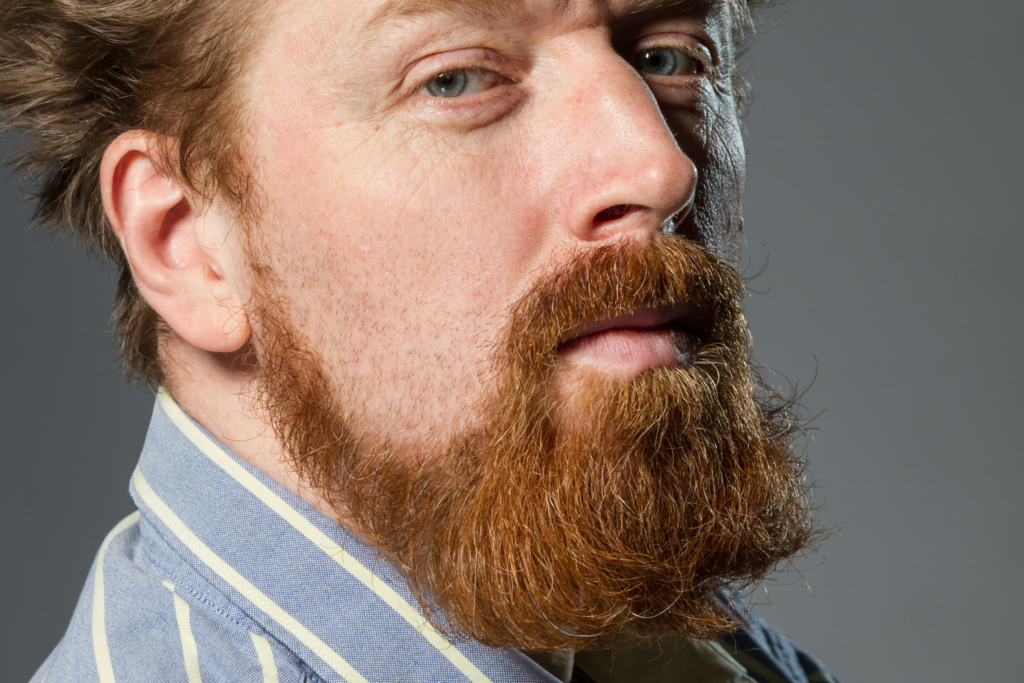
Why is my beard turning blonde?
The hair on your head is a dark, chestnut brown, but your beard is blonde?! How did that happen?
The presence of more pheomelanin in your facial hair follicles will produce a blonde beard.
A blonde beard represents a higher concentration of yellow pigments. Blonde hair color can be temporary due to a number of factors. So, it is possible that your blonde beard will go through a metamorphosis.

Will blonde facial hair darken?
Is it possible for your blonde facial hair to eventually match your hair color? Maybe!
A number of factors can cause blonde facial hair to darken over time. Age, chemicals, and a decrease in pigment-producing cells can change blonde hair.
Just like blonde head hair darkens over time, so does beard hair. Age causes an increase in eumelanin leading to darker pigments. The overall number of pigment-producing cells decreases as we get older, which can also upset the color balance.
Chemicals, especially chlorine, can darken blonde hair. If you spend a lot of time in the water, expect your blonde beard to be fleeting.
What if your hair is turning blonde
Are you finding blonde strands in your otherwise black beard?
Dark beard hairs turn blonde primarily due to genetics and melanin. Stress, chemicals, sunlight, or lifestyle changes can also lighten facial hair.
If you’re finding strands of blonde in your normally dark beard, chances are your genetics and melanin levels are to blame. However, stress has been scientifically proven to lighten hair or even turn it gray.
Chemicals like bleaching agents can also cause random blonde hairs to appear. Sun exposure, changes in diet, or vitamin deficiencies can also be blamed. If the changes happen suddenly, it’s smart to look for underlying reasons.
You can always break out the hair dye if you desire a more uniform color.
Why is your mustache a different color than your beard?
It’s one thing to have your head hair and beard different colors, but what if your mustache differs too?
All hair follicles are unique and have different levels of pigmentation. The pigmentation can vary across your face. This is why your mustache can be a different color than your beard.
You are made up of a genetic soup. Genes passed down from your parents, grandparents and even ancestors far removed can contribute to your hair color. Think of all the colors represented!
It all goes back to the combinations of melanin pigments present in your hair follicles. Sometimes this results in an array of facial hair colors. Embrace the differences and celebrate your ancestry.

